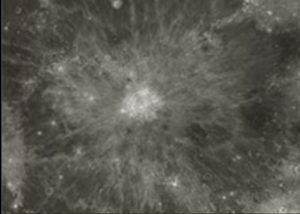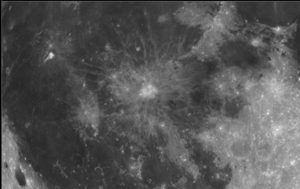Working in the observatory - general
This section is mainly to add more general notes relating to observatory work.
Reminders
- Take the phone so that the dome can be operated
- Connect the camera to use. Usually one of the two Starlight Xpress cameras according to whether I want a large or smaller field of view. For the moon I normally choose the ZWO. That is black and white and I prefer the black and white images of the moon. Rebalance the scope if moving from deep sky to lunar or vice versa.
- Set date and time on scope mount – Best was it to launch “Carte du Ciel” which is planetarium software. Use the interface to connect it to the scope. Then click on set-time and date. This passes the date and time information from the computer to the mount and is picked up by the mount handset.
- Use the Starlight Xpress software to check the filter wheel, Lodestar and camera are connected.
- Put on the Bahtinov mask.
- Use the handset to choose 2 star align. Although the mount is supposed to remember from one time to the next, there seems to be accurate “go to” function by doing an align each time. I centre the first star and then use the focuser to focus that. Then align on the second star. For each star alignment I also use “sync” on Carte du Ciel to synchronise that with the mount.
- Take off the Bahtinov mask. Now ready to start.
Resolving power and pixel size of cameras
- The resolving power of a 305mm aperture scope theoretically is wavelength/aperture.
- For the ODK12 this comes out to 1.8×10^-6 radians – taking a central wavelength of 550nm.
- When this is converted to degrees it comes to 0.4 arc seconds (“).
- With average seeing only at Coppice Farm the effective resolution is likely to be 2 or 3 times larger – say at best 0.8″.
- If we stick to radians the likely best resolution is 2×1.8.10^-6 radians. Multiplying this angle by the focal length gives the distance on the photographic sensor corresponding to this resolution. This distance is 2040 x 3.6 x 10^-6 mm = 7344 x 10^-6mm = 7.344 μm. More likely, taking the 3 figure for seeing, this is 11.8 μm.
This is the chart for the various cameras:
| Camera | Colour/Mono | Horz Px | Vert px | Px Sz (μm) | Horz Sz (mm) | Vert Sz (mm) | Resolution (“/px) | Horz fov( ‘) | Vert fov (‘) | Download time (s) |
| ZWO ASI 120 | Mono | 1280 | 960 | 3.75 | 4.80 | 3.60 | 0.38 | 8.10 | 6.10 | 0.03 |
| ZWO ASI 174 | Mono | 1936 | 1216 | 5.86 | 11.3 | 7.10 | 0.59 | 19.12 | 12.01 | 0.03 |
| Atik Infinity | Colour | 1392 | 1040 | 6.45 | 9.00 | 6.70 | 0.65 | 15.00 | 11.30 | 0.50 |
| Starlight Xpress H694 | Mono | 2750 | 2200 | 4.54 | 12.50 | 10.00 | 0.46 | 21.04 | 16.83 | 3.50 |
| Starlight Xpress Trius 35 | Mono | 4032 | 2688 | 9.00 | 36.30 | 24.20 | 0.91 | 61.00 | 41.00 | 7.00 |
| Starlight Xpress Lodestar | Mono | 752 | 580 | 8.50 | 6.47 | 4.81 | 0.83 | 10.39 | 8.01 | 0.10 |
The above figures for resolution and field of view are for the use with Orion Optics ODK 12 which has a focal length of 2040mm.
Fields of View
(a) Deep Sky

(b) Lunar


ASI 120 ASI 174
Best fov calculator https://www.skyatnightmagazine.com/astronomy-field-view-calculator/
Polar Alignment
- 12/12/20 Did a polar align and adjusted the RA and DEC. (use ALIGNMENT/POLAR ALIGNMENT). Repeated twice with two star align to get the errors small. Then did a three star align and did a check that it reset the cone error.
PEC
- 12/12/20 Tried to do a PEC using PHD to autoguide. (UTILITY FUNCTION/PEC Training). The documentation says this is OK with the EQ8. But PHD just refused to co-operate. Read later that Autoguiding should go for at least a minute before starting PEC. Will make sure to remember this and try again.
Dome and Rotation
- Battery charged 13/12/20
To establish remote PC access.
- Switch on and boot up Observatory computer.
- Switch on the motor for dome control.
- On the remote machine:
- Click in “type here to search” and select “remote desktop connection”
- From the dialog box select “connect”
- This gives remote access to the whole of the observatory machine.
To access the dome rotation from computer.
- With access to the observatory computer click in “type here to search” and select “bluetooth and other device settings”
- If HC-06_23 is NOT in the list click “add bluetooth or other device” and select “bluetooth” – wait
- Select HC-06-23 from the list and enter the pin “1234”
- Select “done” when it says your device is ready to go.
- To rotate in the star rotation direction type “1” and return. The motor starts
- To stop type “2” and return and to rotate the other direction type “3” and return.
To operate the dome motor from phone.
- Select “serial bluetooth terminal” and then devices”. Select HC-06-23. Best to give time to settle first, otherwise may need more than one go to connect.
- From the start menu select “bluetooth serial terminal” and then “connect”.
- To rotate in the star rotation direction type “1” and return. The motor starts
- To stop type “2” and return and to rotate the other direction type “3” and return.
- Type “device manager” in search and select it
- Expand Human Interface Devices
- Right click on “HD compliant touch screen”
- Select disable device